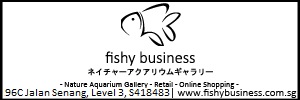:)
IME, mine were lasted their life about three days(!) in the refrigerator.
I didn't checked what the temperature was, but maybe 6~8Celcius in my guess.
When they in refrigerator they looked like dead, but every time I bring them back
they swam even though not so actively like before... (... hibernation?)
I usually store them in a clear plastic cups, wash them by exchanging water
three or four times during the storing.
Actually, the nutrients thing were not my concern, but frys looked fine.
The orange color of BBS's egg sac remained as it was, before I feed them all.
As they are in dead, the water getting more hazy, and stink of that you've never been experienced... 
T.H. Kim
"Oh, God, thy sea is so great, and my boat is so small..."











 Reply With Quote
Reply With Quote





Bookmarks